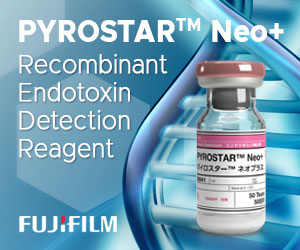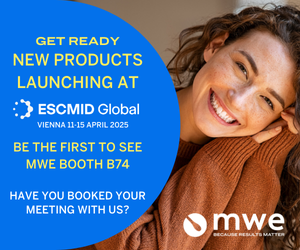Minimizing Contamina...
Detection of Anti-SA...
12th September 2022 Content supplied by: Bertin Instruments
Detection of Airborne Microorganisms Within Healthcare Settings
In this article, discover some tips and tricks for the detection of airborne microorganisms within healthcare settings with the Coriolis Air Samplers.
Choose a sampling strategy adapted to the environment (sampling room size, airflow patterns..)
- Airflow:
In general, it is better to use the highest airflow possible on the Coriolis to capture the maximum amount of air. For the Coriolis μ, this corresponds to 300L/min and for the Coriolis Compact, 50L/min. There is one exception to this rule: for viruses, it is recommended to sample at an airflow equal to or inferior to 200L/min in order to avoid damaging viral particles during the sampling process. - Duration:
It is preferable to sample for the longest time possible to allow for the collection of a large number of particles. In the case of viability studies, it is better to sample at least 3 m3 of air (corresponding to 10min with the Coriolis μ at 300L/min, 30min with the Coriolis μ at 100L/min and 1h with the Coriolis Compact). - Device position:
There are many sampling strategies possible for the positioning of the Coriolis, depending on the room layout and the microorganism concentration in the air. For healthcare settings, the optimal positioning of the device is at an approximate distance of 1 meter from the patient’s bed, at approximately the same height as the patient’s head. If air samples are collected in several points of a patient’s room, it is preferable to start from the further distance away from the patient and then progress towards closer positions. For optimal particle collection, the device should always be placed on the trajectory of the airflow in the room. To be noted, the presence of animals or humans in a room can alter the airflow of the room and should be accounted for when designing the sampling strategy. - Sampling liquid with Coriolis μ:
For most applications, the optimal sampling solution is a saline buffer (such as PBS: Phosphate Saline Buffer) with a small percentage of surfactant around 0.005%, for example, Triton or Tween. A culture medium such as DMEM or MEM is also a suitable alternative. Collection liquid vials can also be purchased from Bertin Technologies and our distributors worldwide. On the other hand, most RNA shields should be avoided due to high evaporation speeds.
In the case of viruses, the same sampling solution can be used except for the addition of surfactants: surfactants such as Triton may affect the integrity of most viruses membranes. Therefore, we recommend against adding any surfactant to the collection liquid. The recommended starting sampling volume liquid range is between 5 and 15mL. When using the Long Time Monitoring option, it is preferable to inject sterile water (or a mix of sterile water and culture medium), rather than PBS, in order to avoid increasing the salt concentration in the cone.
For more tips on the detection of Airborne Microorganisms with Healthcare Settings with the Coriolis Air Samplers, download the whitepaper or use the Request Information button below to contact the supplier.
Tags:
Date Published: 12th September 2022
Source article link: View
Minimizing Contamination Throughout the Food
Detection of Anti-SARS-CoV-2 Using Advanced







